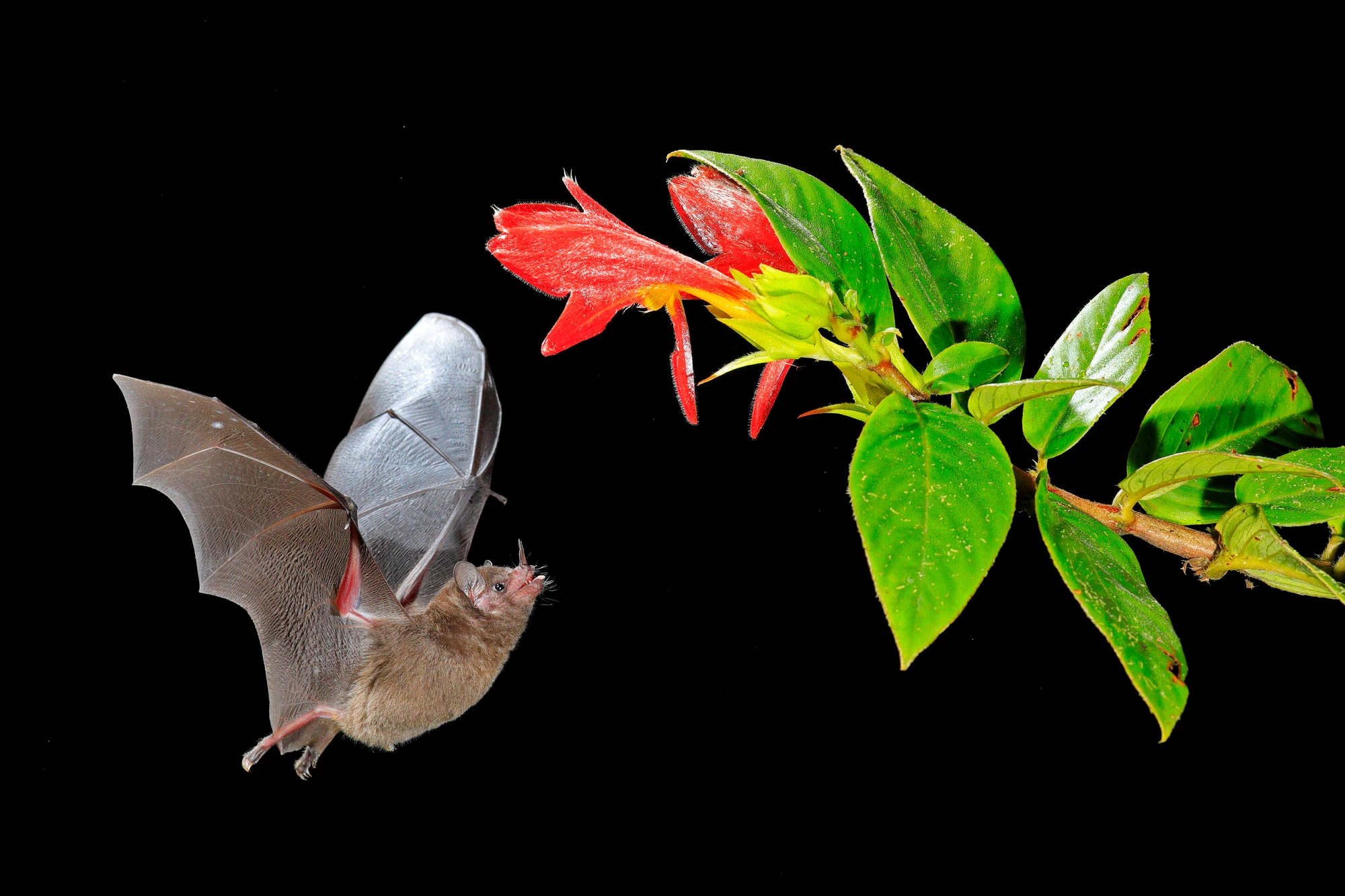Pallas’s long-tongued bats have the fastest metabolism of any mammal, and feed on the nectar from flowers by hovering just outside of them like a hummingbird. Now, using high-speed infrared cameras, researchers at Dartmouth College have discovered that the whiskers on these bats help them expertly extract nectar from the blooms, sometimes as quickly as a half-second. The finding not only reveals a key piece of information about the bats, but also about how flora and fauna can evolve together.
Pallas's long-tongued bats live in Central and South America. They feed by shooting their extra-long tongues into flowers to retrieve their nectar. To help them out in this task, the animals also have extra-long whiskers arranged in a specific pattern on their snouts, which are unlike the shorter and more randomly grown whiskers on other bat species that do not feed on nectar.
"The whiskers of nectar-feeding bats are critical sensory organs that provide high-quality input the brain works with to optimize hovering," said Eran Amicha, lead author of the study and a postdoctoral researcher in biological sciences at Dartmouth who studies echolocation in bats.
"It’s a cool junction between sensory biology and bio-kinematics, between form and function."
To learn more about the animals, their whiskers, and how they carry out their impressive aerial feeding routines, the Dartmouth researchers set up a series of hand-blown glass "flowers" filled with nectar. They then set the bats loose and used high-speed infrared cameras to gather video and still footage as the creatures went about feeding. Next, the researchers clipped the whiskers on some of the bats, set them loose, and found that they were much less agile in their feeding ability. “Clipping the whiskers doesn’t reduce the bats’ ability to feed, they just do it a little less gracefully,” Amichai said. "If it were gymnastics, they’d get an 8.5 instead of a 9.8."
Once the experiment was concluded, the researchers held the bats long enough for their whiskers to grow back before returning them to the wild.
Drawing the conclusion that the bats' whiskers were a key component of their ability to feed efficiently – most feedings in the study took place in a second or less – the researchers say the finding also helped them understand how the bats and flowers in the region coevolved. They say the longer whiskers, along with the bats' face shape and mighty tongues, evolved in order to allow the animals to feed on their preferred deep-throated flowers. Synergistically, such flowers required a creature like the bat to get deep enough inside the blossom to pick up pollen and distribute elsewhere in the forest.
In revealing the function of the unusually long whiskers possessed by Pallas’s long-tongued bats, Amicha says we've gained an insight that could help with conservation efforts, along with a deeper understanding of the way in which creatures other than humans navigate their environments. Unraveling the locomotion patterns of bats can also inspire the development of new technology as we've seen with shape-shifting drones and potentially improved avionics.
"I find thinking in these terms of switching back and forth between completely different ways to perceive the world – and seamlessly integrating their input – to be a mind-blowing concept," Amichai said.
“We are strange animals – we rely almost solely on vision and, to a lesser extent, hearing to perceive the world," Amichai added. "As a result, we interpret other animals' behavior in similar terms and that often leads us to completely misinterpret what they're doing and why. Understanding the sensory world of other animals helps us 'see the world through their eyes' and understand their behavior, needs and challenges better."
The team will now carry out further research to see how the bats handle moveable flowers, predators and other situations.
You can watch a Pallas's long-tongued bat feeding in the following ultra-slow-motion video provided by the researchers.
The research has been published in the journal Proceedings of the Royal Society B Biological Sciences.
Source: Dartmouth College via EurekAlert





